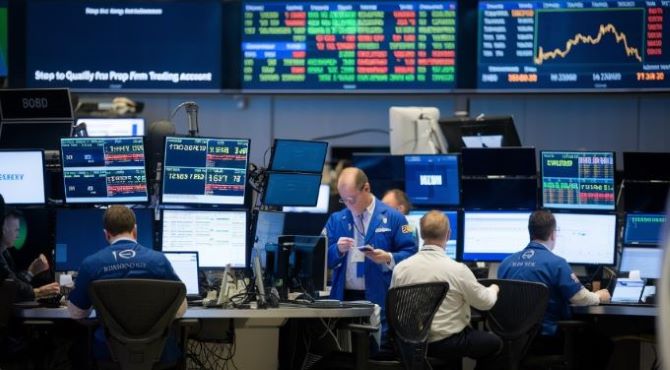Bitcoin Futures in Bull and Bear Markets: What Every Trader Should Know

Bitcoin has evolved from a niche digital experiment to a global financial asset—driving massive rallies, deep corrections, and 24/7 volatility.
And with the rise of Bitcoin Futures, traders now have a regulated, leveraged, and exchange-traded way to profit from its price swings—without owning the underlying cryptocurrency.
But Bitcoin doesn’t behave like stocks or commodities.
Its performance in bull and bear markets is shaped by macro trends, sentiment, adoption cycles, and regulatory news—making it one of the most unpredictable—and potentially rewarding—markets to trade.
In this in-depth guide, we’ll explore:
- How Bitcoin Futures work
- Their behavior in bull and bear markets
- Key drivers behind price moves
- Proven strategies for both environments
- Risk management techniques for extreme volatility
By the end, you’ll know exactly how to trade Bitcoin Futures—whether the market is soaring or collapsing.
✅ What Are Bitcoin Futures?
Bitcoin Futures are standardized contracts traded on regulated exchanges—primarily the CME Group (Chicago Mercantile Exchange)—that allow traders to speculate on the future price of Bitcoin.
- Symbol: BTC (standard), MBT (Micro Bitcoin)
- Contract Size: 5 BTC (BTC), 0.1 BTC (MBT)
- Tick Value: $25 (BTC), $5 (MBT)
- Trading Hours: 24/7 (6:00 PM Sun – 5:00 PM Fri ET)
- Settlement: Cash-settled in USD
- Leverage: Up to 10x (broker-dependent)
Unlike spot Bitcoin trading, futures offer:
- Short-selling (profit from price drops)
- Leverage (amplify gains and losses)
- Hedging (protect crypto portfolios)
- Regulated access (no wallet, no custody risk)
💡 Fact: CME Bitcoin futures are used by institutions like Fidelity, MicroStrategy, and hedge funds.
✅ Bitcoin Futures in Bull Markets: Riding the Momentum
A Bitcoin bull market typically follows a halving cycle (every 4 years), increased institutional adoption, ETF approvals, and macroeconomic tailwinds like inflation or dollar weakness.
Key Characteristics of a Bull Market:
- Strong upward trend (30–100%+ gains)
- FOMO-driven rallies (retail buying)
- Media hype and social sentiment spikes
- Breakouts above key resistance levels
How to Trade Bitcoin Futures in a Bull Market
1. Trend-Following Strategy
- Use 200 EMA as a dynamic support
- Buy on pullbacks to moving average
- Trail stop-loss to lock in profits
✅ Example: In 2023–2024, BTC rose from $16,000 to $73,000. Traders who held through pullbacks made 300%+ gains.
2. Breakout & Retest Strategy
- Wait for BTC to break $50,000 or $60,000
- Enter long on retest of breakout level
- Stop-loss below support
- Target 1:2 or 1:3 risk-reward
✅ Pro Tip: Use volume confirmation—real breakouts have rising volume.
3. News-Driven Momentum Play
- Trade Bitcoin ETF approvals, halvings, or Fed rate cuts
- Use pending orders to avoid slippage
- Exit within 48 hours to avoid reversal
🔥 Real Case: Spot Bitcoin ETF approval (Jan 2024) → BTC surged 40% in 3 weeks.
✅ Bitcoin Futures in Bear Markets: Profiting from the Collapse
A Bitcoin bear market follows excessive speculation, macro tightening (high interest rates), regulatory crackdowns, or exchange failures.
Key Characteristics of a Bear Market:
- Sharp corrections (50–80% drawdowns)
- Capitulation events (mass liquidations)
- Low trading volume and sentiment
- “HODL” fatigue and fear
How to Trade Bitcoin Futures in a Bear Market
1. Short-Selling the Downtrend
- Wait for price to break below 200 EMA
- Enter short on retest of resistance
- Use trailing stop to capture momentum
✅ Example: 2022 bear market → BTC fell from $69,000 to $16,000. Short traders made 500%+ gains.
2. Range-Bound Reversal Strategy
- Identify key support/resistance (e.g., $15,000–$20,000)
- Sell at resistance, buy at support
- Use tight stops (3–5 ticks)
✅ Best For: Swing traders during consolidation phases.
3. Event-Driven Panic Play
- Trade regulatory crackdowns (e.g., SEC lawsuits)
- Short during exchange failures (e.g., FTX collapse)
- Close quickly—bear rallies can be sharp
📉 Real Case: FTX collapse (Nov 2022) → BTC dropped 35% in 7 days.
✅ Key Drivers of Bitcoin Futures in Bull and Bear Markets
| Bitcoin Halving | Reduces supply → bullish | Pre-halving hype → post-halving drop |
| ETF Approvals | Institutional inflow → bullish | Denial → bearish |
| Fed Interest Rates | Rate cuts → bullish | Rate hikes → bearish |
| Inflation (CPI) | High inflation → bullish (hedge) | Stable inflation → neutral |
| Regulation | Clear rules → bullish | Crackdowns → bearish |
| Adoption | Major companies adopt → bullish | Exchanges fail → bearish |
🔍 Insight: Bitcoin is a sentiment-driven asset—often moving before fundamentals.
✅ Risk Management: Surviving Bitcoin’s Volatility
Bitcoin is extremely volatile—a 20-tick move can wipe out a beginner’s account.
5 Golden Rules for Trading Bitcoin Futures
- Use Wider Stops (5–10 Ticks)
Let trades breathe—don’t fight volatility. - Avoid Over-Leverage
Never risk more than 1–2% of your account per trade. - Don’t Hold Through Major News
Close positions before CPI, FOMC, ETF decisions. - Trade Micro Contracts (MBT) First
$5 per tick → safer for learning. - Respect Key Levels
Draw horizontal zones from all-time highs/lows.
✅ Real-World Example: Two Traders, Two Markets
Trader A: Bull Market Long (MBT)
- Account: $5,000
- Strategy: Trend-following
- Entry: $30,000
- Exit: $60,000
- Profit: 600 ticks x $5 = $3,000 (60% return)
Trader B: Bear Market Short (MBT)
- Account: $5,000
- Strategy: Breakdown short
- Entry: $65,000
- Exit: $20,000
- Profit: 900 ticks x $5 = $4,500 (90% return)
💬 Lesson: Bitcoin rewards trend followers—in both directions.
✅ Final Thoughts: Bitcoin Futures in Bull and Bear Markets
Bitcoin Futures are not for the faint of heart.
But for traders who understand its behavior in bull and bear markets, they offer unmatched profit potential.
- In bull markets, ride the momentum with trend-following and breakout strategies.
- In bear markets, profit from fear with short-selling and range trading.
The key is risk management, discipline, and emotional control.
Because in Bitcoin, the biggest risk isn’t volatility—
it’s trading without a plan.
Trade smart.
Trade small.
And let Bitcoin’s cycles work in your favor.



